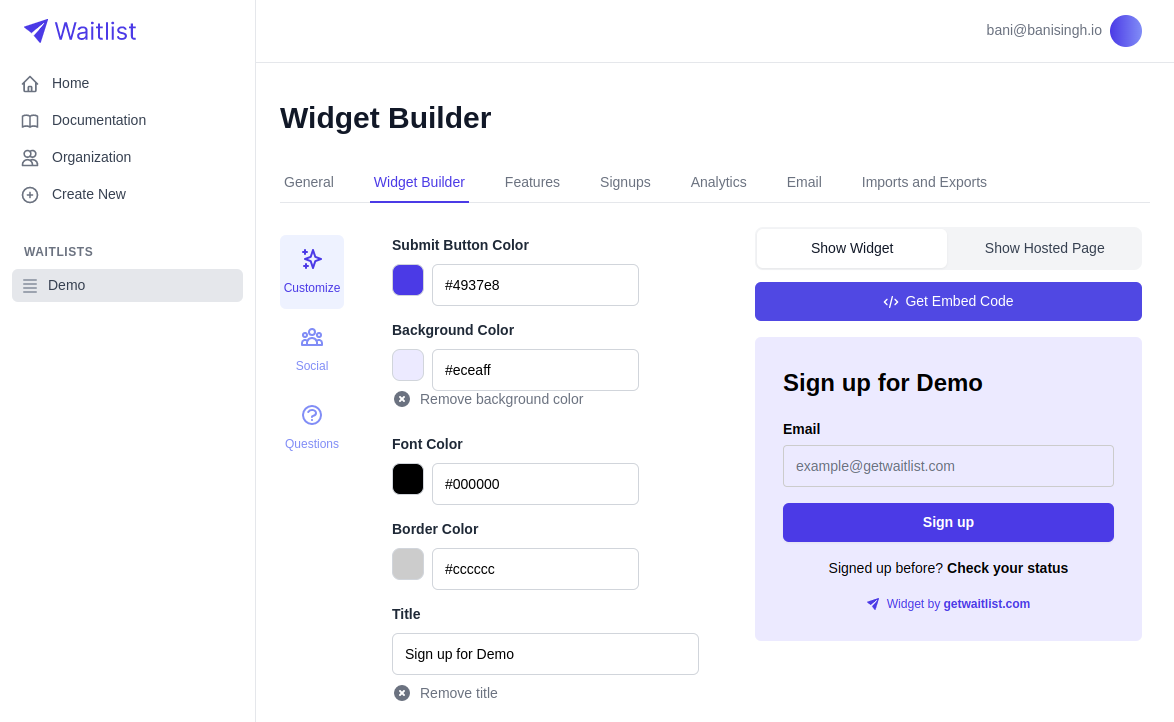Building a waitlist for a fintech product is like walking a tightrope. Move too fast and you'll trip on regulations. Too slow and you'll lose momentum.
But here's the thing: the companies getting it right aren't just avoiding fines—they're using compliance as a competitive advantage. And their waitlists are converting at rates that would make other industries jealous.
Why Fintech Waitlists Are Different
If you're building a fintech product, you can't just copy what worked for other SaaS companies. Financial services have unique challenges:
People are naturally skeptical: When money is involved, users need way more proof that you're trustworthy. A flashy landing page isn't enough.
Regulations everywhere: Every email you send, every claim you make, every piece of user data you collect—it's all potentially regulated. Miss something and you could get shut down.
Risk-averse customers: Your audience doesn't want "disruption" and "move fast, break things" messaging. They want stability and security.
The good news? Once you understand these challenges, you can turn them into advantages.
The 4 Rules for Fintech Waitlists
1. Lead with Security, Not Innovation
Most tech companies lead with innovation: "Revolutionary AI-powered platform!"
For fintech, flip this. Lead with security and trust: "Bank-grade security for modern savers."
What works:
- "Built with institutional-grade security"
- "Your data is protected by the same encryption banks use"
- "Compliant with all financial regulations"
What doesn't:
- "Disrupting traditional banking"
- "Move fast and break things with money"
- Any claims about guaranteed returns
2. Show Your Credentials Early
People want to know you're qualified to handle their money. Don't bury your team's experience—put it front and center.
Robinhood's waitlist worked because they highlighted their team's experience at major financial institutions. People felt safer knowing former Goldman Sachs employees were involved.
Highlight:
- Team experience at major banks or financial firms
- Security certifications and partnerships
- Regulatory licenses and approvals
- Notable advisors from the finance industry
3. Be Transparent About the Process
Traditional SaaS waitlists can be mysterious: "Something big is coming!"
Fintech waitlists need transparency. People want to know what you're building, how it works, and when it'll be ready.
Share regularly:
- Security audit results
- Regulatory approval progress
- Technology partner announcements
- Timeline updates (be conservative)
4. Use Education, Not Hype
Instead of hyping features, educate your audience. This builds trust and positions you as an expert.
Content that works:
- "How digital banking security really works"
- "Understanding FDIC insurance for online banks"
- "What to look for in a fintech security audit"
- "Your rights as a digital banking customer"
Real Examples That Worked
Chime built their waitlist by focusing on education about mobile banking and highlighting their FDIC insurance. They avoided flashy promises and instead showed step-by-step how their security worked.
Mercury targeted startups but led with their team's experience building banking infrastructure. They made compliance and security the hero, not the afterthought.
Brex emphasized their team's experience and their focus on solving real business problems, not just building cool fintech features.
What About Compliance?
Yes, fintech compliance is complex. But you don't need to be a lawyer to get the basics right:
For the US:
- Don't promise specific returns without proper disclaimers
- Be clear about FDIC insurance (if applicable)
- Include risk warnings for investment products
- Get legal review before launch
For Europe (GDPR):
- Get explicit consent for data collection
- Explain exactly how you'll use their data
- Make it easy to unsubscribe or delete data
- Store data securely from day one
The key: Get proper legal counsel early. It's cheaper than fixing problems later.
Common Mistakes to Avoid
Overpromising returns: "Join our waitlist for guaranteed 10% returns!" This will get you in trouble fast.
Generic tech messaging: "We're disrupting finance" sounds scary to people who want their money safe.
Hiding your team: If people don't know who you are, they won't trust you with their money.
Ignoring security: If you can't explain how you protect user data, you're not ready to launch.
Being vague about timelines: People planning their finances need realistic timelines, not "launching soon."
The Referral Challenge
Most waitlists use referral programs to grow virally. In fintech, be careful here.
Safe approaches:
- Educational resource access for referrals
- Priority access for referrals
- Non-monetary perks (branded items, exclusive content)
Avoid:
- Cash rewards for referrals
- Investment bonuses for signups
- Anything that looks like paying for customer acquisition in financial services
Making It Work
The fintech companies with the most successful waitlists follow this pattern:
- Start with trust: Security and team credentials come first
- Educate constantly: Weekly educational content about the problem you're solving
- Be transparent: Regular updates on progress, challenges, and timelines
- Show social proof: But from credible sources (industry experts, not just user counts)
- Move thoughtfully: Better to launch right than launch fast
Remember, in fintech, your waitlist isn't just marketing—it's often the first impression of how you'll handle people's most important asset: their money.
The companies that get this right don't just avoid regulatory problems. They build deeper trust, higher conversion rates, and more loyal customers than any other industry.
And in fintech, trust is the ultimate competitive moat.
